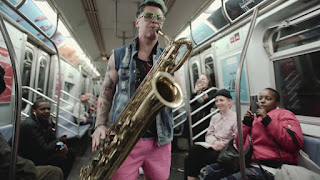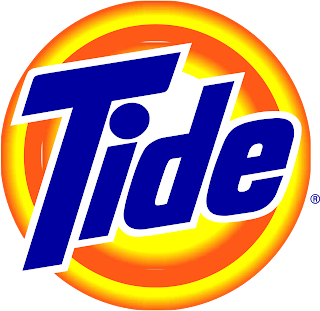Music Marketing
When an artist is ready to get the music out there, he/she/they must be able to transfer artistic creativity to the marketing campaign in order to stand out. However, one should also be aware of common and contemporary forms of marketing others have taken to for their own and adapt accordingly. Some techniques are vital for the success of any emerging artist at any time period, such as frequent live shows and relevant community engagement; and others have been present only in our era so far, the concept of genre artist fusion, and most notably blogging. However, there are some recent developments that have only been in use for the last couple of year, for example video game exclusive music festivals and, perhaps the most influential of them all, synchronized streaming.
Above all else, a successful musician is a performer. Even those who started their careers producing learn that though approval can be achieved through their releases, validity can only be reached when presenting the craft live. Live shows as a marketing method is discussed in a blog titled 'Games, Guerrilla Campaigns, & Modern Music Marketing' by Inside The Rift in a sense that it is a fair way to guarantee the attention of people, even if they just stop for a few seconds to listen in. "There just isn’t a better way, when you’re a young or up-and-coming artist, to make sure that new people are hearing your sound, or that people around town are talking about you." There isn't a better way to describe the effects of this technique. It is often combined with the focus on bigger city with large pedestrian population traffic. In fact, it is used so frequently that the New York City Subway has become a popular cite for up and coming artists to perform, as they can make sure that new waves of spectators appear multiple times in one session. Performers, such as brass house bands Lucky Chops and Too Many Zooz alike have chosen this territory as their signature stage, as they can interact with the people of New York and still communicate with the international variety of people that often come to visit New York.
In reference to recent culture, blogging has been a way in which artists can stay connected with the network of fans they have built through their live performances. And, it can serve as a sort place holder for people who cannot play live shows often. It can be thought of as a necessity, a place holder to performance, or even as a substitute, but blogging has made its way to account as one of the main priorities for the majority of most artists. It can also open doors for artists to expand to be more than just artists. As 'Games, Guerrilla Campaigns, & Modern Music Marketing' puts it: "As You can let them know what you’re up to (even if you only have a small group of fans), what you’re listening to, etc. – become a total musical information and entertainment resource rather than just an artist." Having an active blog gives the holder the chance to evolve to be more than what he/she/they was originally.
Back in the 16th century Italy, the fusion of visual and auditory elements was first used in order to create the genre of Opera. Fast forward a couple of years and we have now combined the video game medium with the awe of music festivals. The rise of digital music festivals have made it possible for a new media crossover to take place, and as it does, it gives new waves of artists the opportunity to present their music through these emerging ways. In CASSANDRA's blog 'digital-only festivals redefine immersive entertainment', three separate examples of video game exclusive festivals are demonstrated in how they functioned, and how they achieved their legitimate success and praise among the gaming community. It should be mentioned that all three of these games run on a multi-player base, so it is likely that the reason these festivals were successful wan't only for the in-game rewards and interactions, but because players who attended got to interact with others who attended, as one usually does in a real life music festival. It isn't a culture shock as was 16th century Italy, but it certainly is an interesting and revolutionary development, especially for artists looking to release their music in new and creative ways.
Making music for video game developers has been a long standing practice, in fact some themes found within them can be surprisingly emotional and well developed to even the most skeptic ears of video game detractors...so long as they like music. In the words of 'Games, Guerrilla Campaigns, & Modern Music Marketing': "The range of games is sometimes highlighted as a perk for these gaming platforms, and as casino developers seek new and engaging themes, they’ve turned to groups like Guns N’ Roses and even the Jimi Hendrix Experience with significant success." It is later discussed that since video game developers typically want already recognized artists to represent in their work, new artists have a low chance to present their music in this medium compared to others. However, this is still a valuable option to consider once artists are somewhat more well known.
Above all else, a successful musician is a performer. Even those who started their careers producing learn that though approval can be achieved through their releases, validity can only be reached when presenting the craft live. Live shows as a marketing method is discussed in a blog titled 'Games, Guerrilla Campaigns, & Modern Music Marketing' by Inside The Rift in a sense that it is a fair way to guarantee the attention of people, even if they just stop for a few seconds to listen in. "There just isn’t a better way, when you’re a young or up-and-coming artist, to make sure that new people are hearing your sound, or that people around town are talking about you." There isn't a better way to describe the effects of this technique. It is often combined with the focus on bigger city with large pedestrian population traffic. In fact, it is used so frequently that the New York City Subway has become a popular cite for up and coming artists to perform, as they can make sure that new waves of spectators appear multiple times in one session. Performers, such as brass house bands Lucky Chops and Too Many Zooz alike have chosen this territory as their signature stage, as they can interact with the people of New York and still communicate with the international variety of people that often come to visit New York.
Leo Pellegrino performing at New York Subway with his band Too Many Zooz.
Leo Pellegrino performing solo at BBC Proms 2017.
Genre crossovers have happened all throughout the history of music. This is how music evolves; African percussionist cadence mixes with Spanish-Portuguese ballad and Samba is created, Samba progressively breaks into sub-genres until jazz is introduced some hundreds of years later, and Bossa Nova is created. More recently, discussed in the New York Times article titled 'How a New Kind of Pop Star Stormed 2018' by Jon Caramanica, genre crossovers are covered in a marketing manner rather than a culturally influencing way. As Caramanica puts it, artists coming from around the world are able to collaborate with each other in a truly revolutionary way, and this is because although the artists' backgrounds span across the globe, they have all formed part of the same current genre of Pop. In this article, Pop as it is known today is a combination between trap, folk, Latin styles like Reggeaton, a minute amount of what was Pop in the previous generation, K-Pop, all lead by the new wave of Hip-Hop. Under the present circumstance, marketing ones music via crossover is achievable at a world-wide scale; although most of the artists within Pop are American, Colombian, and South Korean, audiences from countries surrounding these three have formed this past decade.
Vinicius de Moraes, Maria Bethania, and Toquinho (left to right). Three respected Samba artists of the 20th century.
Maluma and J Balvin (left to right). Currently proclaimed most inlfuential Reggaeton artists.
Back in the 16th century Italy, the fusion of visual and auditory elements was first used in order to create the genre of Opera. Fast forward a couple of years and we have now combined the video game medium with the awe of music festivals. The rise of digital music festivals have made it possible for a new media crossover to take place, and as it does, it gives new waves of artists the opportunity to present their music through these emerging ways. In CASSANDRA's blog 'digital-only festivals redefine immersive entertainment', three separate examples of video game exclusive festivals are demonstrated in how they functioned, and how they achieved their legitimate success and praise among the gaming community. It should be mentioned that all three of these games run on a multi-player base, so it is likely that the reason these festivals were successful wan't only for the in-game rewards and interactions, but because players who attended got to interact with others who attended, as one usually does in a real life music festival. It isn't a culture shock as was 16th century Italy, but it certainly is an interesting and revolutionary development, especially for artists looking to release their music in new and creative ways.
Coalchella- creative mode point of view.
Making music for video game developers has been a long standing practice, in fact some themes found within them can be surprisingly emotional and well developed to even the most skeptic ears of video game detractors...so long as they like music. In the words of 'Games, Guerrilla Campaigns, & Modern Music Marketing': "The range of games is sometimes highlighted as a perk for these gaming platforms, and as casino developers seek new and engaging themes, they’ve turned to groups like Guns N’ Roses and even the Jimi Hendrix Experience with significant success." It is later discussed that since video game developers typically want already recognized artists to represent in their work, new artists have a low chance to present their music in this medium compared to others. However, this is still a valuable option to consider once artists are somewhat more well known.
Vertigo.
Perhaps the most important technique now in use is the cross between social media and streaming services. Synchronized social streaming enables Spotify and Apple Music listeners from around the world to sync up to a common playlist and listen along with other users while also being able to interact with them. While some prefer to listen to music alone, the is no doubt the main attraction of this development for thousands is the social interactions generated through it just like in the previously mentioned Video Game Festivals. What is most unique about this invention is that it is not the artists sharing their music to their listeners directly, it is listeners sharing their favorite music to other listeners. In the article 'IN SYNC' by CASSANDRA, three of these programs are mentioned: Playlist, Vertigo, and JQBX. Through each of these services, people can join listening parties and taking into consideration adding certain music to their own playlist. This is great to a listener, but it can be a great tool if used properly by any artists looking to market themselves; first by adding their music to the synchronized playlists anonymously and watching listeners' reactions, and another is by using it as a way to stay informed as to what the people lean towards when it comes to their own genre. Either way, it is the most innovative and maybe even interactive way an artist can connect to the audience.







Comments
Post a Comment